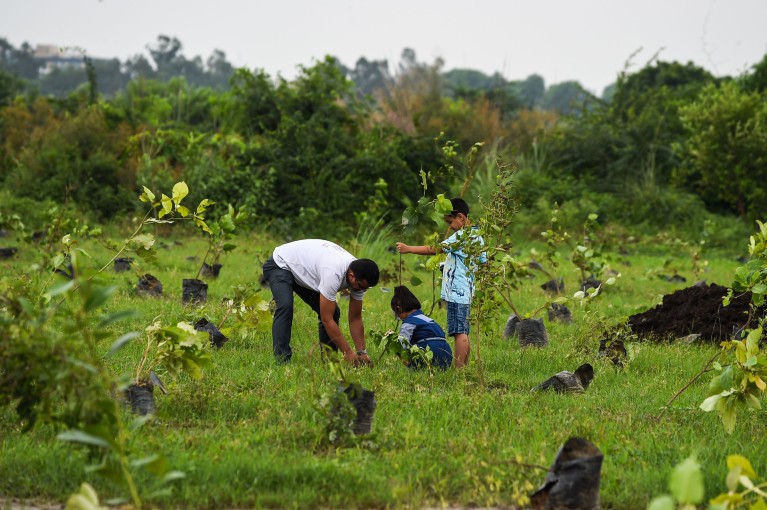The Limitations of Tree Planting for Climate Solutions
While tree planting is often hailed as a powerful tool in combating climate change due to its ability to absorb carbon dioxide, it’s important to recognize that this approach has its limitations.
Rooted in Reality: Assessing the Effectiveness
Although trees play a crucial role in sequestering carbon, the impact of large-scale tree planting initiatives may be overestimated. Factors such as land availability, soil quality, maintenance costs, and the time it takes for trees to reach maturity all influence the effectiveness of tree planting as a climate solution.
Seeing the Forest for the Trees: Complex Ecological Interactions
Planting trees indiscriminately without considering the local ecosystem can have unintended consequences. It’s essential to understand the intricate web of interactions between species, soil, and climate to ensure that tree planting efforts do not disrupt existing ecosystems or biodiversity.
Growth Rings of Wisdom: Embracing Diverse Climate Solutions
While tree planting can be a valuable part of the climate solution toolkit, it is crucial to adopt a holistic approach that includes diverse strategies such as renewable energy development, sustainable land use practices, and emissions reduction efforts. Embracing a mix of solutions tailored to specific contexts can lead to more effective and sustainable outcomes in the fight against climate change.
Understanding the Complexities of Carbon Sequestration
Carbon sequestration, a process central to combating climate change, involves capturing carbon dioxide from the atmosphere and storing it long-term. While the concept seems straightforward, the execution and impact of carbon sequestration are far from simple.
One of the primary complexities lies in the variety of technologies and methods available for carbon capture and storage (CCS). From natural solutions like afforestation and reforestation to more advanced techniques such as direct air capture and carbon capture and storage at industrial facilities, the options are diverse and evolving.
Furthermore, the effectiveness of carbon sequestration methods varies based on factors like geographical location, soil types, and the scale of implementation. For example, while planting trees is a natural form of carbon sequestration, the type of tree, its lifespan, and the maintenance practices significantly influence its carbon storage capacity.
Moreover, there are economic, policy, and social challenges surrounding carbon sequestration. The cost of implementing carbon capture technologies, the lack of clear regulations, and the societal acceptance of large-scale sequestration projects are critical hurdles to widespread adoption.
Despite the complexities, carbon sequestration remains a crucial tool in mitigating the effects of climate change. Research and innovation in this field are essential to overcoming the challenges and maximizing the potential of carbon sequestration for a sustainable future.
The Role of Reforestation in Mitigating Global Warming
Reforestation plays a vital role in combatting the effects of global warming. By planting trees, we can help absorb carbon dioxide from the atmosphere, reducing the greenhouse gas levels that contribute to climate change. Trees act as natural carbon sinks, storing carbon and releasing oxygen back into the air.
Benefits of Reforestation
Not only does reforestation mitigate global warming, but it also helps in preserving biodiversity, preventing soil erosion, and creating habitats for wildlife. Forests promote a healthier environment and contribute to the overall well-being of our planet.
Key Strategies for Effective Reforestation
To maximize the impact of reforestation efforts, it is essential to focus on planting native tree species, ensuring proper maintenance of newly planted forests, and involving local communities in tree planting initiatives. Additionally, monitoring the growth and health of trees over time can help track the success of reforestation projects.
Common Pitfalls to Avoid
Avoid common pitfalls in reforestation projects by selecting appropriate tree species for the region, considering the long-term maintenance of forests, and addressing potential threats such as pest infestations or wildfires. Proper planning and implementation are crucial for sustainable reforestation practices.
Why Diverse Strategies Are Essential for Climate Action
Breaking Down the Headlines
When it comes to tackling the global climate crisis, it’s evident that a one-size-fits-all approach isn’t effective. Diverse strategies encompass a range of solutions and initiatives that can address the multi-faceted challenges posed by climate change.
The Bigger Picture
Implementing diverse strategies for climate action involves a comprehensive understanding of the interconnected nature of environmental issues. It requires a combination of policies, technologies, and behavioral changes at individual, community, and governmental levels to create a sustainable impact.
What This Means Going Forward
Looking ahead, embracing diverse strategies will be crucial for achieving meaningful progress in combating climate change. Collaborative efforts between governments, businesses, and communities will be essential to drive innovation, adaptability, and resilience in the face of environmental challenges.
